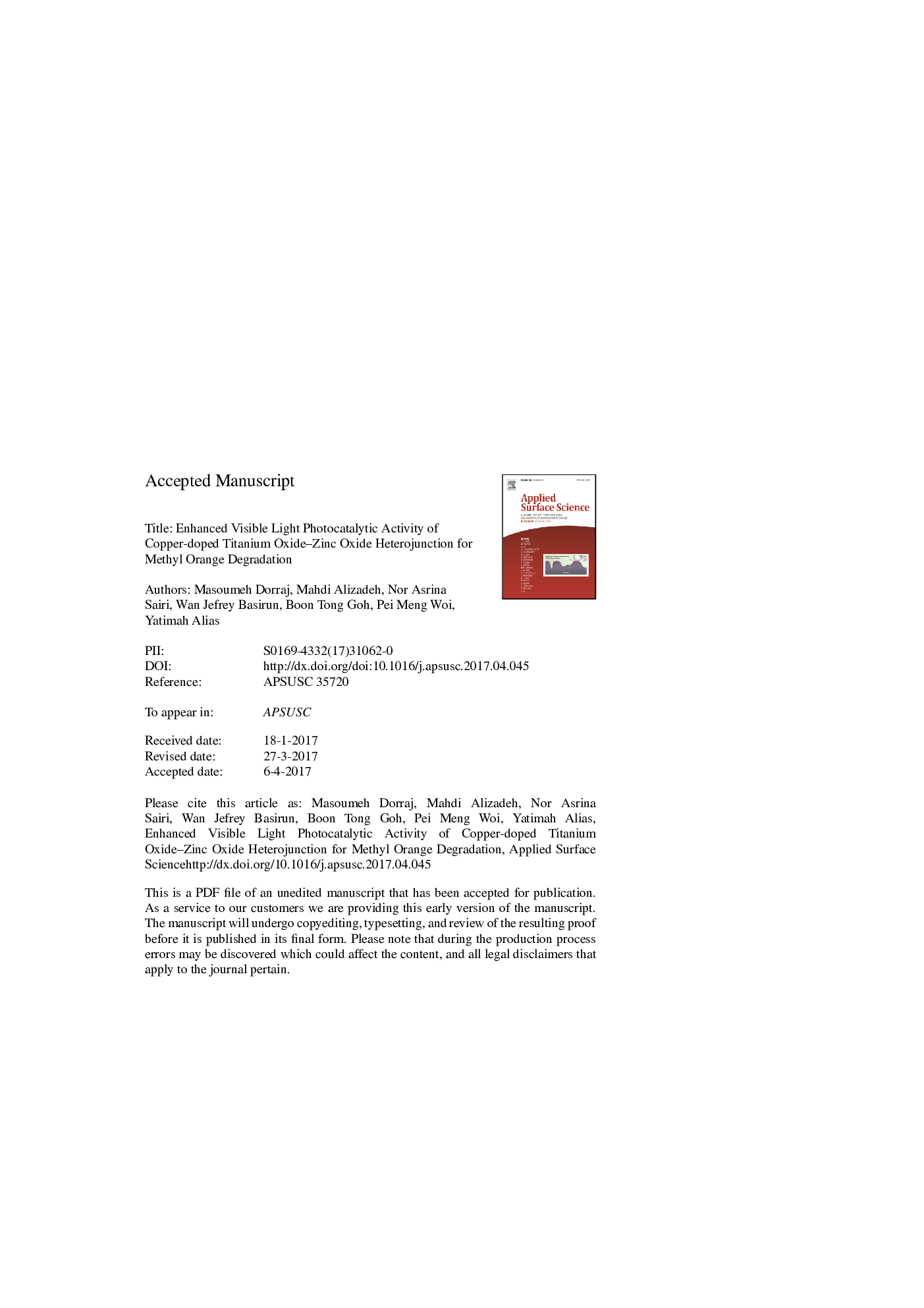| Article ID | Journal | Published Year | Pages | File Type |
|---|---|---|---|---|
| 5350771 | Applied Surface Science | 2017 | 30 Pages |
Abstract
A novel Cu-doped TiO2 coupled with ZnO nanoparticles (Cu-TiO2/ZnO) was prepared by sol-gel method and subsequent precipitation for methyl orange (MO) photodegradation under visible light irradiation. The compositions and shapes of the as-prepared Cu-TiO2/ZnO nanocomposites were characterized by photoluminescence spectroscopy, X-ray diffraction, X-ray photoelectron spectroscopy, field emission scanning electron microscopy, transmission electron microscopy, UV-vis diffuse reflectance spectra and Brunauer-Emmett-Teller adsorption isotherm techniques. The Cu-TiO2/ZnO nanocomposites showed considerably higher photocatalytic activity for MO removal from water under visible light irradiation than that of single-doped semiconductors. The effects of Cu-TiO2 and ZnO mass ratios on the photocatalytic reaction were also studied. A coupling percentage of 30% ZnO exhibited the highest photocatalytic activity. The enhanced photocatalytic activity of the Cu-TiO2/ZnO nanocomposites was mainly attributed to heterojunction formation, which allowed the efficient separation of photoinduced electronâhole pairs at the interface. Moreover, these novel nanocomposites could be recycled during MO degradation in a three-cycle experiment without evident deactivation, which is particularly important in environmental applications.
Related Topics
Physical Sciences and Engineering
Chemistry
Physical and Theoretical Chemistry
Authors
Masoumeh Dorraj, Mahdi Alizadeh, Nor Asrina Sairi, Wan Jefrey Basirun, Boon Tong Goh, Pei Meng Woi, Yatimah Alias,
